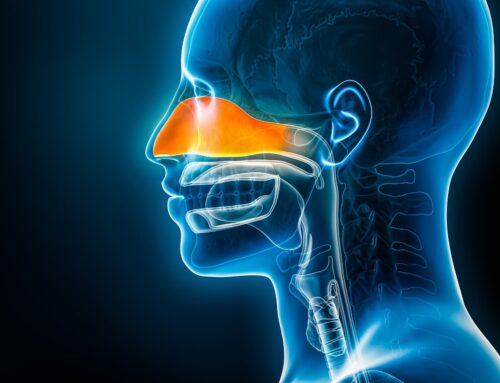Introduction
Chronic rhinitis, a prevalent condition characterized by persistent nasal symptoms such as chronic stuffed up nose, bothersome post-nasal drip, and a chronic runny nose, significantly impacts the quality of life for millions of individuals globally. While traditional treatments like medications, surgery, and cryotherapy have been staples in chronic rhinitis management, they often offer temporary relief and come with varying degrees of effectiveness and drawbacks. However, a relatively novel approach known as nasal ablation has emerged as an alternative, offering promising outcomes in alleviating chronic rhinitis symptoms.
In this blog post, we will delve into the intricacies of nasal ablation, explore its numerous benefits over conventional treatments, and discuss how it effectively addresses the root causes of chronic rhinitis.
Understanding Nasal Ablation
Nasal ablation represents a sophisticated and minimally invasive procedure aimed at treating chronic rhinitis by directly targeting the underlying anatomical abnormalities within the nasal passages. This procedure employs advanced techniques such as radiofrequency ablation and submucosal cauterization to selectively modify or remove problematic nasal tissue. By inducing controlled tissue damage and subsequent remodeling, nasal ablation restores normal nasal anatomy and function, leading to significant improvement in chronic rhinitis symptoms.
The process of nasal ablation typically begins with a thorough evaluation by an otolaryngologist to assess the severity of chronic rhinitis symptoms and determine the most appropriate course of treatment. During the procedure, local or general anesthesia may be administered to ensure patient comfort. The chosen ablation technique is then carefully applied to targeted areas within the nasal passages, such as the middle turbinate or inflamed mucosa, with the goal of reducing nasal congestion, excessive mucus production, and inflammation.
Benefits Over Traditional Treatments
Nasal ablation offers a plethora of advantages over traditional treatments like medications, surgery, or cryotherapy, making it an appealing option for individuals suffering from chronic rhinitis. Firstly, unlike medications that often provide only temporary relief and may cause systemic side effects, nasal ablation offers a more permanent solution to chronic rhinitis symptoms. By directly addressing the underlying anatomical abnormalities driving nasal congestion and inflammation, nasal ablation provides sustained symptom relief without the need for ongoing medication use.
Moreover, surgical interventions for chronic rhinitis, while effective in some cases, can be invasive and carry risks of complications such as bleeding, infection, and nasal deformities. In contrast, nasal ablation is minimally invasive, typically performed on an outpatient basis, and involves minimal discomfort and recovery time for patients. Additionally, nasal ablation offers greater precision and customization compared to cryotherapy, which primarily targets superficial tissue layers. This precision allows for a tailored approach to each patient’s unique nasal anatomy, ensuring optimal outcomes with minimal risk of adverse effects.
Furthermore, nasal ablation has been shown to promote tissue regeneration and remodeling, leading to long-term improvements in nasal airflow and symptom control. This comprehensive approach not only provides symptomatic relief but also reduces the risk of disease progression and complications associated with untreated chronic rhinitis. Moreover, by addressing the root cause of chronic rhinitis, nasal ablation offers patients the opportunity for a better quality of life and reduced dependence on symptomatic medications.
Treating the Root Cause of Chronic Rhinitis
Chronic rhinitis is a complex condition often caused by underlying factors such as nasal inflammation, turbinate hypertrophy, and mucosal dysfunction. Nasal ablation directly targets these root causes by selectively modifying the nasal tissue and nerves responsible for symptoms such as chronic stuffed up nose, persistent runny nose, and post-nasal drip. By targeting nerve-rich areas on the lateral wall of the nasal cavity, nasal ablation can effectively alleviate the burden of chronic rhinitis on patients’ daily lives.
Moreover, nasal ablation promotes tissue regeneration and remodeling, leading to long-term improvements in nasal airflow and symptom control. This comprehensive approach not only provides symptomatic relief but also reduces the risk of disease progression and complications associated with untreated chronic rhinitis. By restoring the physiological balance within the nasal passages, nasal ablation offers patients the opportunity for a better quality of life and reduced dependence on symptomatic medications.
Case Studies and Patient Testimonials
To further illustrate the effectiveness of nasal ablation in treating chronic rhinitis, here are some case studies and patient testimonials:
Case Study 1: Mr. A, a 45-year-old male, presented with chronic rhinitis symptoms, including nasal congestion, runny nose, and post-nasal drip. Despite trying various medications, his symptoms persisted, significantly impacting his daily activities and quality of life. After undergoing nasal ablation, Mr. A experienced a dramatic improvement in his symptoms, with a significant reduction in nasal congestion and post-nasal drip. He reported feeling more energetic and was able to resume his normal activities without the constant burden of nasal discomfort.
Case Study 2: Mrs. B, a 55-year-old female, had been suffering from chronic rhinitis for several years, despite undergoing multiple rounds of nasal steroid sprays and antihistamine medications. Her symptoms, including a chronically stuffed up nose and persistent post-nasal drip, had progressively worsened over time, impacting her sleep and overall well-being. Following nasal ablation, Mrs. B experienced a remarkable improvement in her symptoms, with a noticeable decrease in nasal congestion and post-nasal drip. She reported feeling more rested and rejuvenated, with a renewed sense of vitality and optimism.
Patient Testimonial: “Chronic rhinitis is a problem that I’ve had as far back as I can remember, and it is a problem that always seemed to get worse the longer that I was aware of it. After undergoing nasal ablation, within a couple weeks I could feel a definite difference in how I was feeling and the state of my chronic rhinitis. I’m at the state now where I feel like I’m at least 95% or more improved, and I don’t have the constant annoyance it’s caused. I’ve managed to regain my interest in activities without any impedance from the constant flow of rhinitis. I can’t get over the impact that nasal ablation has had on my life.”
Conclusion
In conclusion, nasal ablation represents a groundbreaking advancement in the treatment of chronic rhinitis, offering patients a safe, effective, and long-lasting solution to their nasal symptoms. By directly targeting the underlying anatomical abnormalities responsible for chronic rhinitis, nasal ablation provides superior outcomes compared to traditional treatments such as medication, surgery, or cryotherapy.
As our understanding of nasal anatomy and pathology continues to evolve, nasal ablation stands out as a cornerstone in the comprehensive management of chronic rhinitis, offering hope to millions of individuals worldwide suffering from this debilitating condition.
References
- Ramey J, Bailie N, Lockey RF. Allergic rhinitis therapies. Immunol Allergy Clin North Am. 2016;36(2):261-276. doi:10.1016/j.iac.2015.12.005
- Douglas R. Chronic rhinosinusitis. Am Fam Physician. 2011;83(9):1056-1061.
- Little SC, Mace JC, Smith TL. Evidence-based practice: endoscopic sinus surgery. Otolaryngol Clin North Am. 2012;45(5):1015-1036. doi:10.1016/j.otc.2012.06.001




